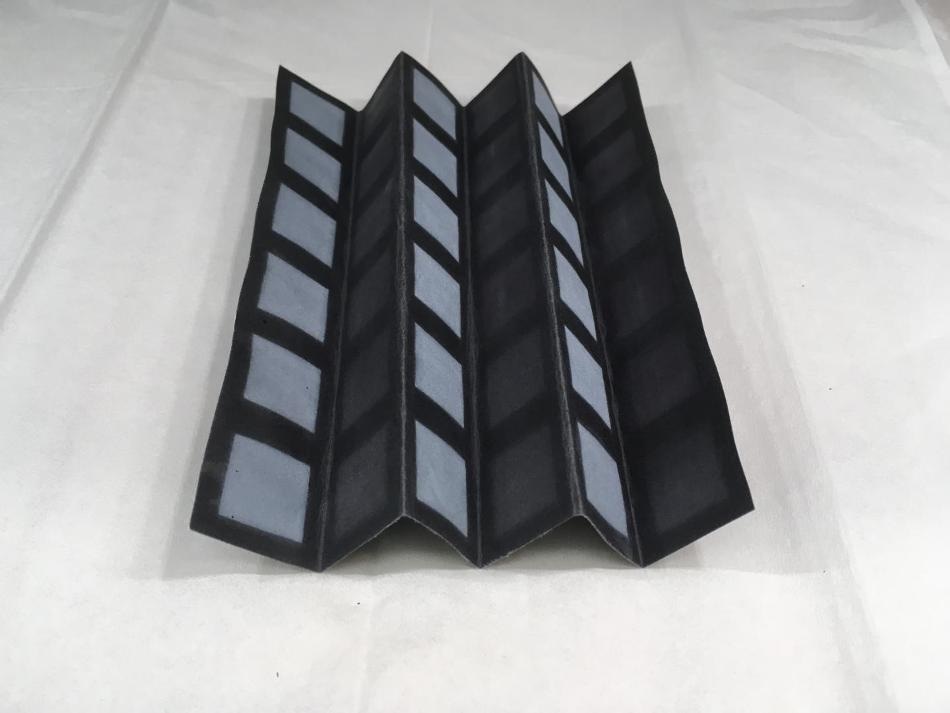Dec 22 2016
 Researchers at Binghamton University, State University of New York have created a bacteria-powered battery on a single sheet of paper that can power disposable electronics. Credit: Seokheun
Researchers at Binghamton University, State University of New York have created a bacteria-powered battery on a single sheet of paper that can power disposable electronics. Credit: Seokheun
Rather than ordering batteries by the pack, we may get them by the ream in the future.
Scientists from Binghamton University, State University of New York have developed a bacteria-powered battery on a single piece of paper that can power disposable electronics. The manufacturing technique minimizes fabrication cost and time, and the design could improve the use of bio-batteries as a power source in dangerous, remote and resource-limited areas.
Papertronics have recently emerged as a simple and low-cost way to power disposable point-of-care diagnostic sensors. Stand-alone and self-sustained, paper-based, point-of-care devices are essential to providing effective and life-saving treatments in resource-limited settings.
Seokheun "Sean" Choi, Assistant Professor, Binghamton University
Choi is in the Electrical and Computer Engineering Department in the Thomas J. Watson School of Engineering and Applied Science, and the director of the Bioelectronics and Microsystems Lab at Binghamton.
Choi and PhD candidate Yang Gao, who is a co-author of the paper, placed a ribbon of silver nitrate below a thin layer of wax on one half of a single piece of chromatography paper to create a cathode. The pair then created a reservoir out of a conductive polymer on the other half of the chromatography paper, which acted as the anode.
Once correctly folded and a few bacteria-filled liquid drops are added, the microbes' cellular respiration generates electricity to power the battery.
The device requires layers to include components, such as the anode, cathode and PEM (proton exchange membrane). [The final battery] demands manual assembly, and there are potential issues such as misalignment of paper layers and vertical discontinuity between layers, which ultimately decrease power generation.
Seokheun "Sean" Choi, Assistant Professor, Binghamton University
Different stacking and folding methods can significantly enhance power and current outputs. Researchers were able to produce 31.51 µW at 125.53 μA with six batteries in a 2 x 3 pattern and 44.85 µW at 105.89 μA in a 6 x 6 setup.
It would take millions of paper batteries to provide electricity to a common 40 W light bulb, but in a disaster situation or on the battlefield, portability and usability is paramount. In addition, there is sufficient power to run biosensors that detect pathogens in a body, monitor blood sugar levels in diabetes patients, or perform other life-saving functions.
Among many flexible and integrative paper-based batteries with a large upside, paper-based microbial fuel cell technology is arguably the most underdeveloped. We are excited about this because microorganisms can harvest electrical power from any type of biodegradable source, like wastewater, that is readily available. I believe this type of paper biobattery can be a future power source for papertronics.
Seokheun "Sean" Choi, Assistant Professor, Binghamton University
The advancement is the latest step in the development of paper battery by Choi. In 2015, the team created its first paper prototype, which was a matchbook-styled foldable battery. Earlier this year, they revealed a ninja throwing star-inspired design.
The current work is published online in the Advanced Materials Technologies journal and will be presented at the IEEE MEMS 2017 conference in Las Vegas, Nevada on Jan. 22-26.
The study was supported by two different grants from the National Science Foundation.